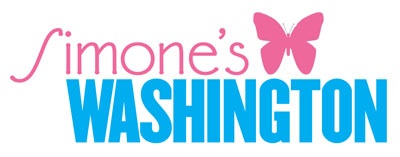
Teri Agins Comments on Hervé Leger by Max Azria
Fashion Week-Bryant Park, New York City: On February 3, 2008 at 2:00 pm, exiting the Hervé Leger runway presentation, we spent a few minutes talking to Teri Agins, a Fashion Writer for the Wall Street Journal and Author of The End of Fashion.
Mariessa (M): It is so great to see you! What is the buzz about the Hervé Leger line?
Teri Agins (TA): Hervé Leroux was the original designer of the Hervé Leger brand. But, there was some dispute and he sold the trademark. Max Azria from BCBG bought it and has worked to revive the brand. There was a lot of excitement in the room today because people wanted to see the brand come back. Other than Dolce and Gabbana and maybe Roberto Cavalli, this kind of tight sexy look is virtually missing in stores. I thought it was cool…on the front row they had all of the girls lined up in their dresses. It was a nice photo opportunity. Azria definitely knows what he is doing with regard to the re-launch of this brand.
M: Which designer do you look forward to seeing every year?
TA: Tracy Reese (tracyreese.com) is one of the designers I look forward to each season. I have been wearing her designs for years. Tracy makes dresses and uses a lot of color; two things that I like. I also look forward to Oscar de la Renta because you know his shows are always going to be magnificent and well done. I enjoy Carolina Herrera, too. I also look for Proenza Schouler, Zac Posen, Derek Lam, Richard Chai & Philip Lim.
M: WDC recently introduced legislation to create a Fashion Commission. Do you think that fashion can spur economic development?
TA: I don’t know. But the thing is…I can understand why DC might want to get in on this. Fashion is a big part of pop culture and people are interested in following it. Dallas has a market week. Chicago and Los Angeles do, too. The stereotype of Washington is that the people are very staid. But, I do not think this is necessarily true. I think that Washington, DC has enthusiastic consumers. Why not? Especially, if you can get the retail community behind it! The one thing that I like about the DC Fashion Commission is the development of a Fashion Incubator. Today, schools are not teaching art and music. Therefore the kids do not get exposed to the design industry. I like the fact that you are making an education effort. That is really important. When people get exposed to fashion, then they become consumers with an interest in the industry, the clothes, design and creativity. This is all a part of the art world. That is great!
M: Thank you Ms. Agins!
FYI, darlin
 g: WHO IS HERVÈ LEGER? Leger is a Parisian designer who began his career in fashion as a hair dresser and milliner (www.herveleroux.com). After working as Karl Lagerfeld’s assistant at Fendi and Chanel, Léger opened up his own atelier in Paris in 1985. Léger perfected the bandage dress made of bands of stretch fabrics, wool, or silk woven with Lycra or Elastene, wound around the body for a tight fit. Max Azria bought the brand in 1998 and hired Jerome Dreyfuss to take over. Leger left the brand he created soon there after suing for breach of contract and trademark infringement among other things. Leger renamed his line Hervé L. Leroux (Hervé the Red). He continues to design elegant, body conscious gowns at his boutique located on 32 rue Jacob in Paris.
g: WHO IS HERVÈ LEGER? Leger is a Parisian designer who began his career in fashion as a hair dresser and milliner (www.herveleroux.com). After working as Karl Lagerfeld’s assistant at Fendi and Chanel, Léger opened up his own atelier in Paris in 1985. Léger perfected the bandage dress made of bands of stretch fabrics, wool, or silk woven with Lycra or Elastene, wound around the body for a tight fit. Max Azria bought the brand in 1998 and hired Jerome Dreyfuss to take over. Leger left the brand he created soon there after suing for breach of contract and trademark infringement among other things. Leger renamed his line Hervé L. Leroux (Hervé the Red). He continues to design elegant, body conscious gowns at his boutique located on 32 rue Jacob in Paris.





